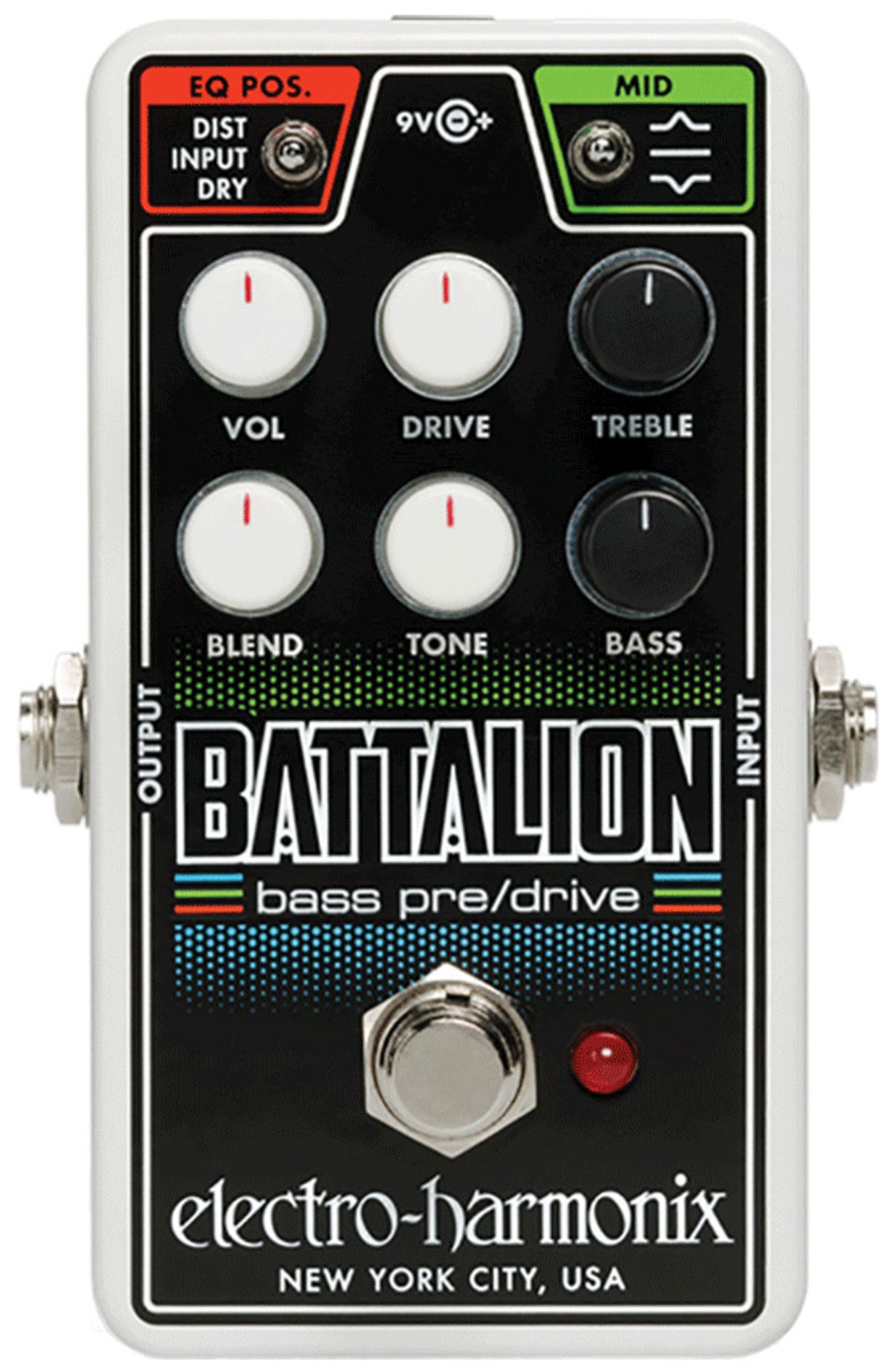
A slimmed-down version of EHX’s tone toolbox for bassists didn’t lose any weight in the functionality department.
Recorded with Epiphone Scroll bass into Focusrite Scarlett 2i4 interface into GarageBand.
Clip 1: Input mode, mid switch flat, drive at 2 o’clock, treble at 2 o’clock, blend at 9 o’clock, tone at noon, bass at 2 o’clock.
Clip 2: Distortion mode, mid switch flat, drive at 3 o’clock, treble at 4 o’clock, blend at 3 o’clock, tone at noon, bass at 1 o’clock.
Clip 3: Input mode, mid switch cut, drive at 9 o’clock, treble at 5 o’clock, blend at noon, tone dimed, bass at 2 o’clock.
RatingsPros:Nice price, small footprint, impressive drive, EQ placement switch. Cons: No XLR out. Street: $117 Electro-Harmonix Nano Battalion ehx.com | Tones: Ease of Use: Build/Design: Value: |
EHX’s Nano Battalion manages to get much of the company’s original Battalion preamp/DI into a standard-sized pedal enclosure. It packs in a busy control panel, yet it’s user-friendly and can make easy work of dialing up a noticeable breath of fresh air for bass tone in need. One standout feature is the mini 3-way toggle that determines the signal path where the EQ is applied—whether it’s the distorted signal only, the clean signal only, or both. Teaming this functionality with the pedal’s 3-band EQ and blend control is what really expands the Nano Battalion’s sound-sculpting prowess and flavor of the drive.
To my ears, the overdrive leans on the warmer side throughout its wide palette. Whether mimicking a mild break-up or pushing a more grind-y distortion, I appreciated its smooth, natural-sounding character, clarity, and intuitive interplay with the EQ. Although I tried, I wasn’t really able to dial in a bad sound throughout my exploration of control combinations. An XLR out would have been a welcome feature, but the pedal’s output can still send a balanced signal for going direct to a board or interface if a TRS cable is used. When you consider the Nano Battalion’s price of just a little north of $100, I’d say it’s a pedal worthy of a good look and listen.
Test gear: Fender Precision, late-’70s Epiphone Scroll prototype, Gallien-Krueger 800RB, Orange OBC212, Focusrite Scarlett 2i4
